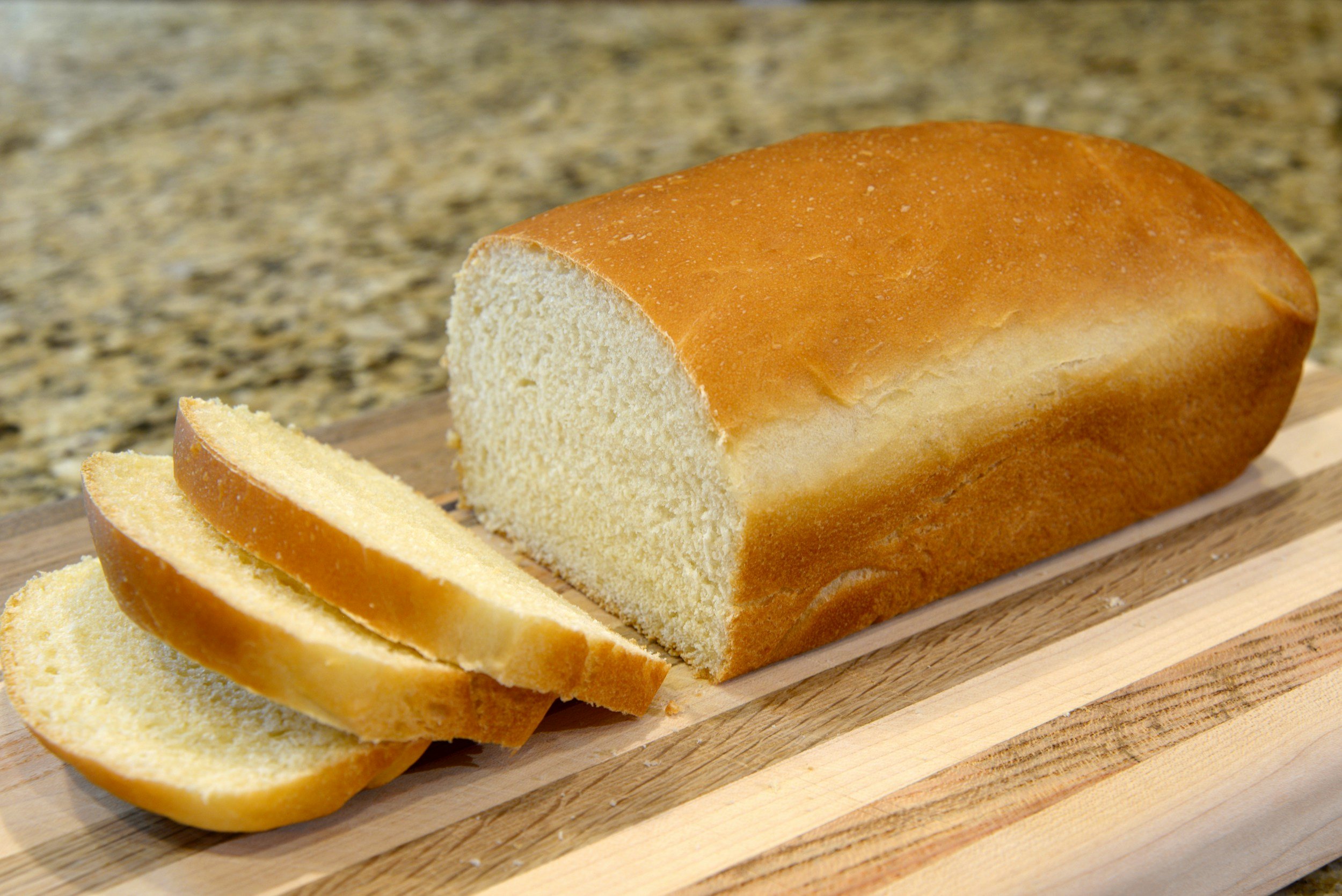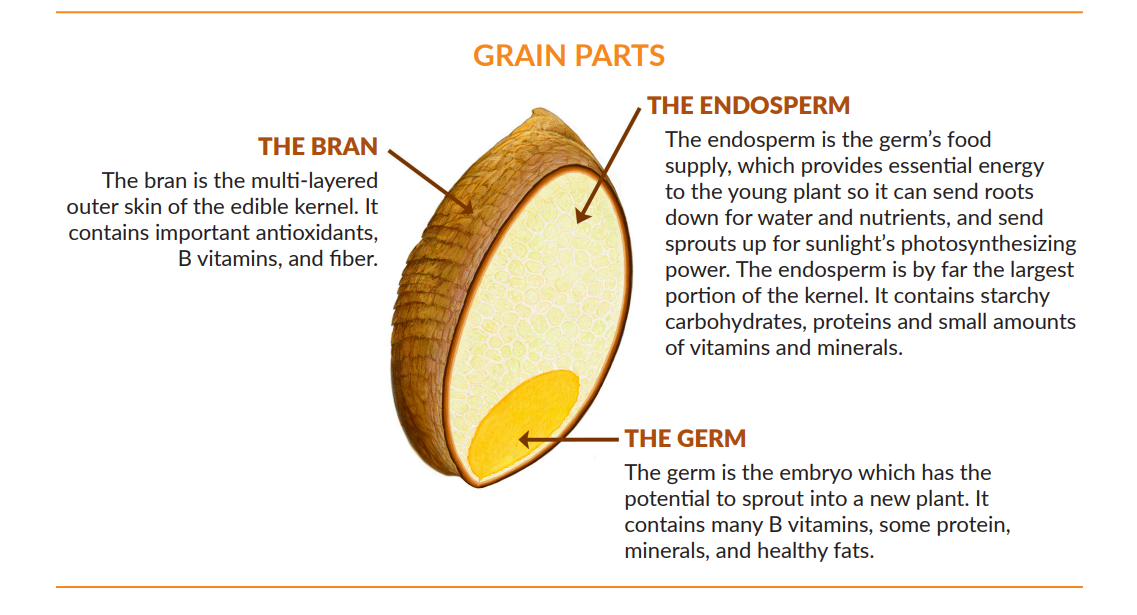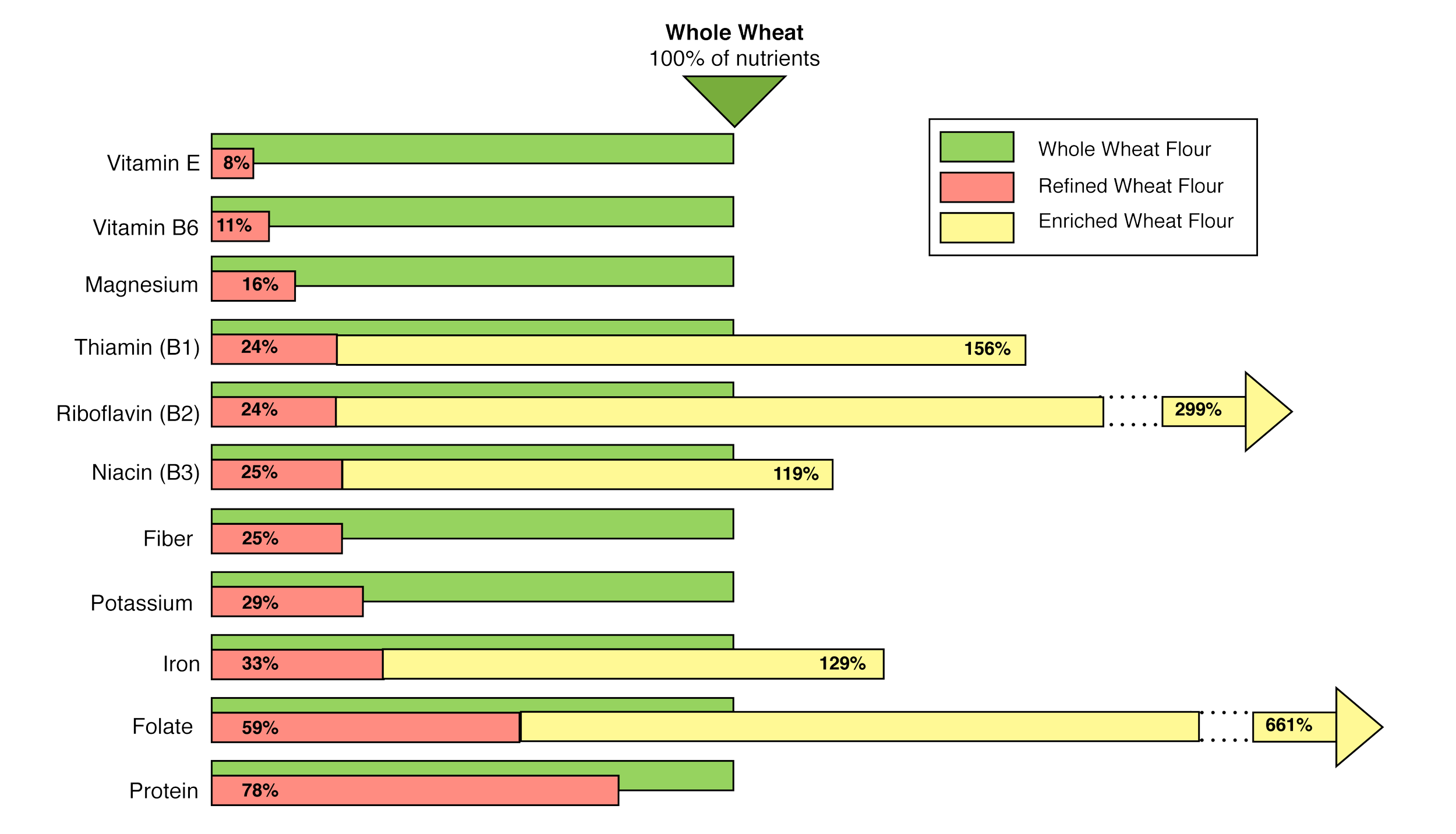Different Types of Bread. Which One Is The Best?
Download Bread Shopping List
There are so many different bread options on the market. It might be confusing to choose only one. How do you know which one is the best for you?
Let’s break it down to the types of bread out there and which is the best for health!
White Bread
White bread is made from refined wheat flour, which means the bran and germ have been removed, stripping away most of its fiber, vitamins, and minerals. At least seventeen key nutrients are lost. The refined wheat flour gives the soft texture and mild flavor.
Sometimes there is even added sugar. Important to always read the ingredient list on the back of the product you are buying.
It has a high glycemic index between 70-100, leading to rapid blood sugar spikes and crashes.
Regular consumption of refined grains has been linked to increased risks of higher inflammation, obesity, type 2 diabetes, and cardiovascular diseases.
Nutrition Facts for 1 slice 25g
Calories 66 kcal.
Carbohydrates 12g (Fiber: 0.6g, Sugars 1.4g)
Fat 0.8g
Protein 2g
Brown Bread
Brown bread on the other hand is made from combining both wheat flour with refined flour.
It does not mean 100% whole wheat, sometimes coloring is added to give the brown color. However, if it has a mixture of whole wheat with refined white flour then it might have slightly higher vitamins, minerals, and fiber.
Nutrition Facts for 1 slice 25g
Calories 75 kcal.
Carbohydrates 13g (Fiber: 1g, Sugars 1.5g)
Fat 1g
Protein 3g
Grain Parts. Data from wholegrainscouncil.org
Whole Wheat Bread
Whole wheat bread contains all three parts of the kernel (the bran, the germ, and the endosperm). Making it the healthiest option between brown, and white bread.
It is higher in protein, fat, fiber, and vitamins (like B vitamins, folate, and niacin).
Texture might be more firm and chewy.
Glycemic index is between 55-70.
To make sure that it is 100% whole grain bread, check the package label and look for 100% whole wheat.
Whole wheat bread has many benefits. It helps with digestion, blood sugar control, and heart health by lowering LDL cholesterol levels.
Nutrition Facts for 1 slice 32g
Calories 80 kcal.
Carbohydrates 14g (Fiber: 2g, Sugars 1g)
Fat 1g
Protein 4g
What About Whole Grain Bread?
It will include all three parts of the grain kernel. But whole grain includes other grains, such as barley, corn, and rye.
What About Multi-Grain Bread?
Multi-grain indicates that a product is made from more than one kind of grain, for example, wheat, oats, and barley. It might not be 100% whole grain. Some are made with refined flour rather than whole grains.
Sourdough Bread
Sourdough is made through a natural fermentation process using wild yeast and lactic acid bacteria.
This fermentation lowers the bread's glycemic index, making it a better option for blood sugar regulation compared to conventional white bread.
Glycemic index is around 55.
The lactic acid bacteria also help break down phytic acid, an antinutrient that inhibits the absorption of essential minerals like iron and zinc.
It also contains prebiotics that support gut health and may improve digestion.
Because of the fermentation, many people with IBS can tolerate it better. The fermentation helps break down the gluten and other FODMAPS.
Nutrition Facts for 1 slice 28g
Calories 77 kcal.
Carbohydrates 15g (Fiber: 0.6g, Sugars 1g)
Fat 1g
Protein 3g
Rye Bread
Rye bread, especially in its whole grain form, has a lower glycemic index than wheat bread due to its dense structure and high fiber content.
Glycemic index around 49.
It contains resistant starch, which feeds beneficial gut bacteria and supports metabolic health.
Additionally, rye is rich in lignans—plant compounds with potential antioxidant and anti-inflammatory benefits. Research indicates that rye bread can enhance satiety and help with weight management by reducing post-meal insulin spikes.
Nutrition Facts for 1 slice 25g
Calories 64 kcal.
Carbohydrates 12g (Fiber: 1.4, Sugars 1g)
Fat 1g
Protein 2g
Comparing whole wheat flour to refined wheat flour and enriched wheat flour in terms of vitamins and minerals.
Data from USDA Agricultural Research Service FoodData Central, (2019)
How to Select the Best Bread for You
When choosing bread, consider your nutritional needs and dietary preferences:
For weight management: Opt for whole wheat, rye, or sourdough bread, as they are higher in fiber and promote satiety.
For blood sugar control: Choose sourdough or rye bread, which have a lower glycemic index and help stabilize blood sugar.
For gut health: Sourdough bread, with its natural fermentation process and prebiotics, is a great choice.
For heart health: Whole wheat, rye, and multigrain breads with seeds provide fiber, omega-3s, and antioxidants that support cardiovascular function.
Download Bread Shopping List




